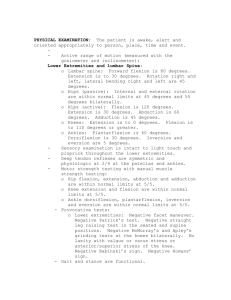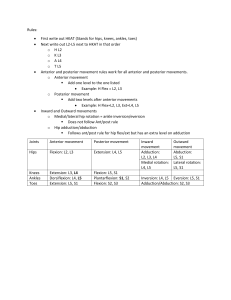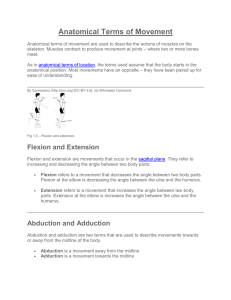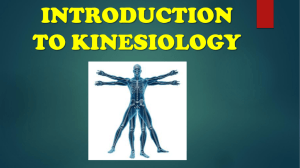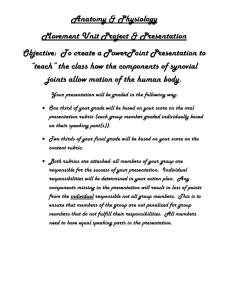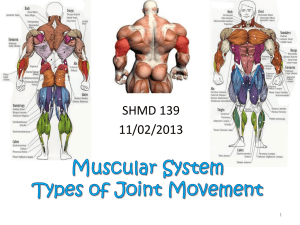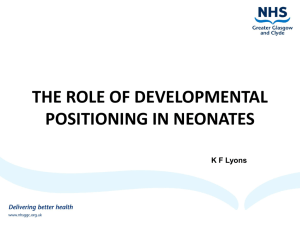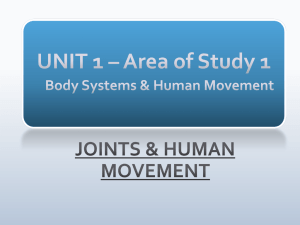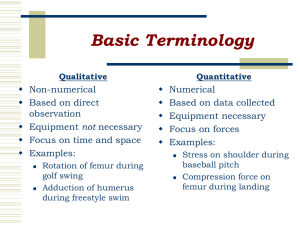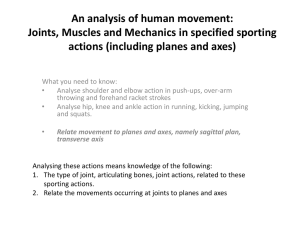PE terminology - Horton High School
advertisement
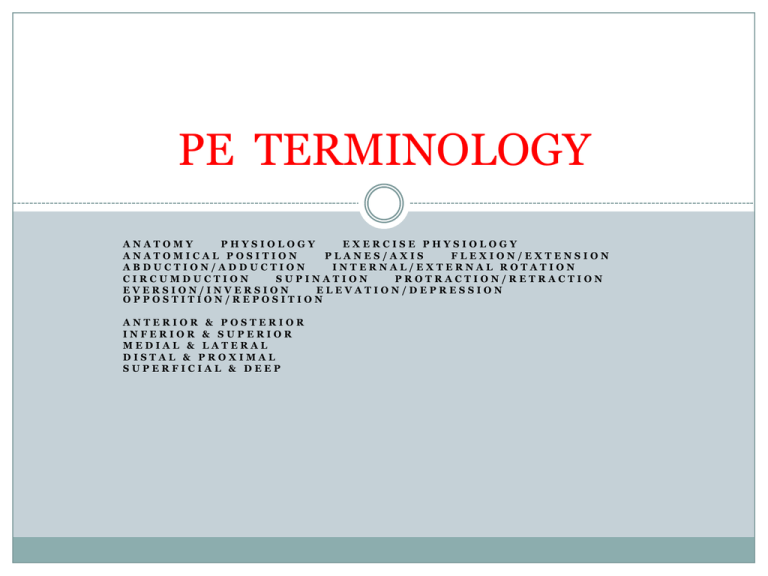
PE TERMINOLOGY ANATOMY PHYSIOLOGY EXERCISE PHYSIOLOGY ANATOMICAL POSITION PLANES/AXIS FLEXION/EXTENSION ABDUCTION/ADDUCTION INTERNAL/EXTERNAL ROTATION CIRCUMDUCTION SUPINATION PROTRACTION/RETRACTION EVERSION/INVERSION ELEVATION/DEPRESSION OPPOSTITION/REPOSITION ANTERIOR & POSTERIOR INFERIOR & SUPERIOR MEDIAL & LATERAL DISTAL & PROXIMAL SUPERFICIAL & DEEP Power Point Terminology Assignment Create a PP for each definition that includes a brief written defintion of the term and shows a picture (labeled) of the position or movement. Place it in the in box for 12 Ldr – Terms Due for Tues Feb 23rd. Late projects 10% deducted for each day it is late After 5 days an incomplete will be given and you will come in during a noon or recess until it is completed. Anatomy THE STUDY OF THE STRUCTURES OF THE BODY. NAMING THE PARTS OF THE BODY. IN MECHANICS IT WOULD MEAN KNOWING THE PARTS OF THE CAR Exercise Physiology The study of how exercise affects our body’s functions. The physiology of a car would mean knowing how the parts work. How the cylinders and rods work to make the engine go… Planes and Axis Sagittal plane – forward and backward movements Frontal plane – sideways movements Transverse plane – horizontal movements Axis are points around which we rotate Longitudinal Axis – is vertical running head to toe Antero Posterior Axis – extends from front to back Horizontal Axis – extends from side to side Anatomical Position THE BODY IS POSITIONED FACE FRONT, EYES FORWARD, THUMB ON ONE ARM TURNED OUT AND TOES FORWARD. Flexion & Extension Flexion – reducing the angle of a joint. Flexion occurs in the Sagittal plane. Ie – bending the elbow is flexion Extension – enlarging the angle of a joint. Extension takes place in the Sagittal plane Straightening the knee is extension Abduction & Adduction Abduction – moving an arm or leg sideways away from the center of the body. (lateral arm raise) Adduction – is the opposite of abduction, moving an arm or leg from the side toward the center of the body. (the arm outstretched to the side is dropped to your side) Internal/External Rotation Internal rotation -Rotating your hip, knee and foot toward the midline or in toward the middle. External rotation – rotating your bent arm away from the midline (see below) Circumduction Making circles with arms straight out. This is really a combination of Flexion, Extension, Abduction and Adduction. Trunk rotations are also an example of Circumduction Supination/Pronation Supination -Turning your thumb out with palm facing front Pronation –turning your thumb in with the palm facing down Protraction/Retraction Protraction - movement in a forward direction such as sticking your chin out Retraction - moving in a backward direction such as pushing your shoulders back and squeezing your shoulder blades together Dorsi flexion/Plantar flexion Dorsi Flexion - Flex the ankle to pull your toes toward your head Plantar Flexion - Standing on your toes. Opposite of Dorsiflexion Inversion/Eversion Inversion - stand on the out inner edge of your feet Eversion - stand on the outside edge of your feet Elevation/Depression Elevation - movement in an upward direction such as shrugging the shoulders Depression - movement in a downward direction such as slumping the shoulders Opposition/Reposition Opposition - touching ones finger (s) to the thumb. Allows us to grasp and manipulate tools Reposition - opposite of opposition. Returning thumb and fingers to normal position Anterior & Posterior Anterior refers to forward surfaces of the body. Toward the front Posterior refers to back surfaces of the body. Toward the back Ie – the spine is posterior on the body while the eyes are anterior Superior & Inferior Superior refers to upward surfaces Inferior refers to downward surfaces Ie – the head is superior to the knee while the feet are inferior to the knee Medial & Lateral Medial means toward the center midline of the body Lateral means away from the midline to the side Ie – Feet apart is movement laterally while feet together is a medial movement Proximal & Distal Proximal means toward the point of attachment of a limb to the body Distal is the opposite or away from the attachment to the body Ie – the fingers are distal on the arm while the elbow more proximal Superficial & Deep Superficial means toward the surface of the skin Deep means toward the inner core of the body
